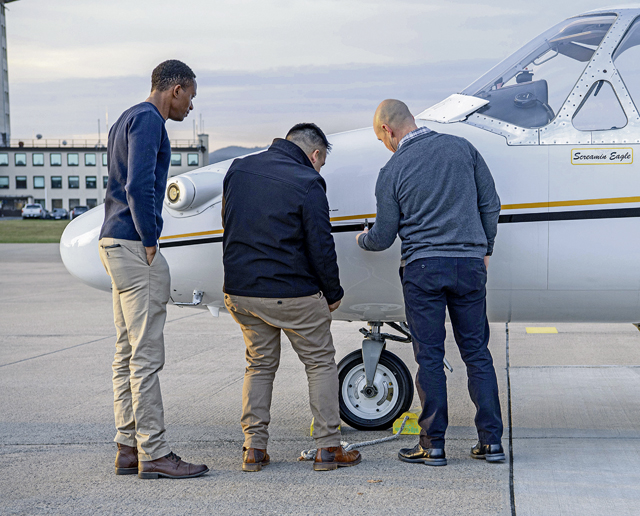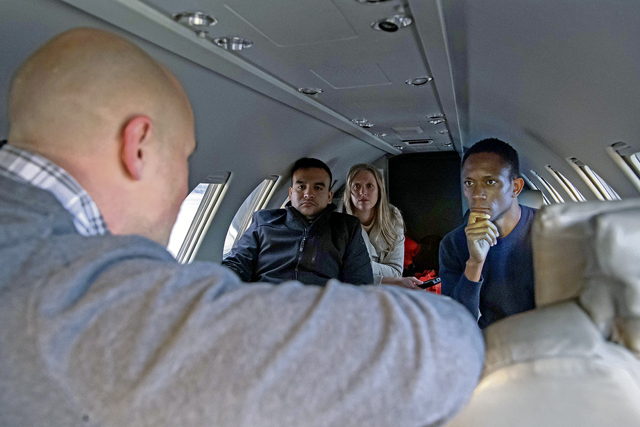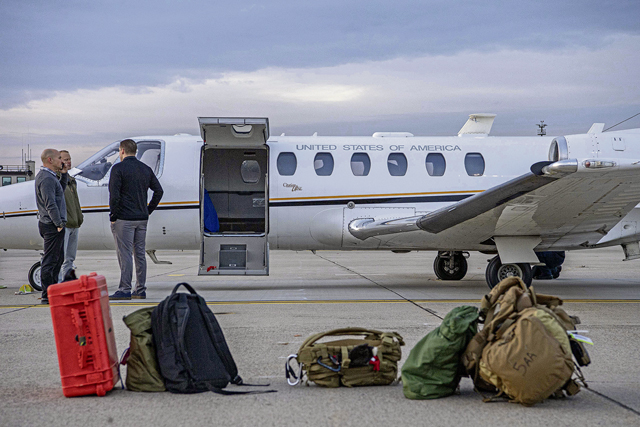
The 86th Aeromedical Evacuation Squadron hosted a UC-35A Cessna Citation V aircraft training event with U.S. Army Soldiers assigned to the General Support Aviation Battalion Oct. 18.
The goal of the training was to expand the capabilities of the 86th AES by practicing aeromedical evacuation skills with the eight aircraft the Army has volunteered to use for moving patients within the European theater and the squadron’s area of responsibility.
“I am reaching out to the Army because they are willing to help us see if we can use their aircraft for our mission,” said Staff Sgt. Austin Sukut, 86th AES technician flight examiner. “We have had a lot of patient movements within the last couple months, and so we are trying to expand our capabilities.”

The 86th AES works with the Landstuhl Regional Medical Center to complete its mission by providing transportation to a secure hospital for continued patient treatment, such as at LRMC or in the U.S., when necessary.
“The main countries we go to are Poland, Romania, and sometimes Morocco and we bring them back to LRMC,” said Sukut. “Last month we had about 40 patient movements. Sometimes we have three in one day, and other times we have one every other day.”
The Army supporting the Air Force establishes a symbiotic relationship by building skills together, keeping the 86th AES flexible with new aircraft certifications to continue providing support for their patients.

Whenever the aircraft the 86th AES use are down for routine maintenance, they can work with the Army to continue providing airlift medical evacuation support.
“We want to continue to keep up to date on everything as far as the capabilities we provide,” said U.S. Army Chief Warrant Officer 2 Zachary Altizer, Easy Company 1-214 GSAB pilot. “This is a new mission set we would adopt, this is not something our aviators have experienced a lot, so we are very excited to work with joint forces.”
Joint force cooperation between sister military services is imperative to keeping U.S. forces ready to fly and combat effective.







